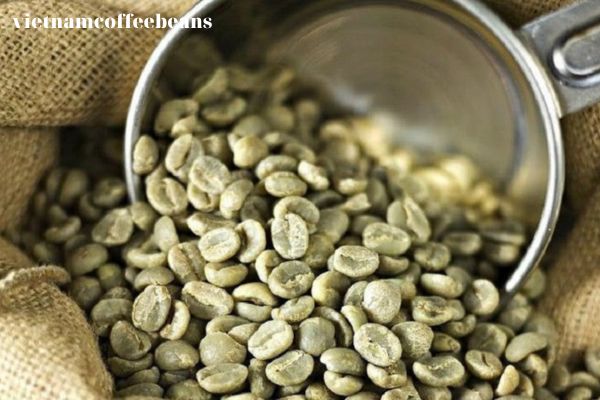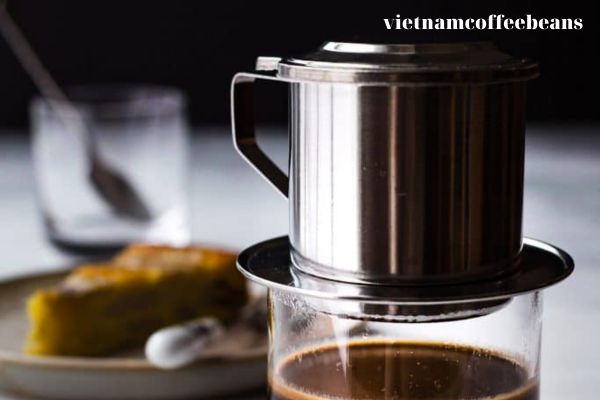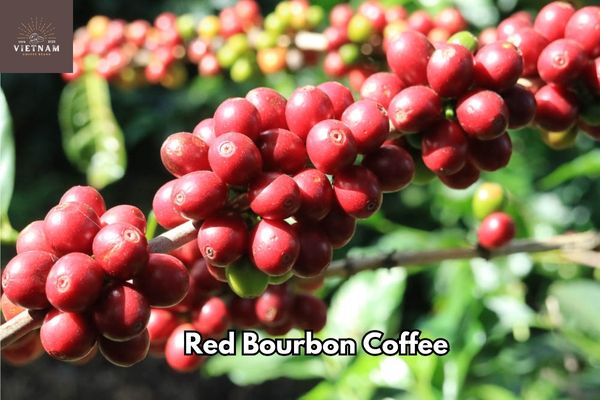Typica coffee is one of the oldest and most widely cultivated coffee varieties. It originated in Ethiopia before being brought to Jamaica in the 18th century by the British. Typica has a distinctive flavor profile with notes of chocolate, caramel, and citrus. However, it has a relatively low yield and susceptibility to diseases.
Today, Typica is grown in regions worldwide like Indonesia, Mexico, and Colombia. The most famous Typica coffees are Jamaica Blue Mountain and Malabar Coast. Jamaica Blue Mountain Typica is grown at high altitudes in Jamaica and has a smooth, rich taste. Malabar Coast Typica from India has an earthy, spicy flavor from monsoon winds.
While susceptible to challenges, Typica remains a popular variety prized for its complex flavor with sweet and nutty tones. Its lineage and taste profile make it the foundation for many other coffee varieties as well.
Takeaways
- Typica is a variety of Arabica coffee beans known for its unique flavor and is one of the oldest and most famous varieties in the world.
- Typica beans are known for their rich, nutty flavor, full body, and low acidity and come in several sub-varieties, mutations, interspecific hybrids, and intraspecific hybrids, each with its own unique flavor profile.
- This is often characterized by a unique flavor profile, combining the sweetness of amrello de Botucatu, the sourness of pluma hidalgo, and the earthy tones of devamachy and Botucatú.
- Harvesting of typical coffee is a very labor-intensive process that requires careful timing and technique to ensure the highest quality beans, and sourcing and roasting is crucial in bringing quality to consumers around the world.
What is Typica Coffee Beans?
Typica is a variety of the Coffea arabica species of coffee that originally comes from Yemen. This variety was brought from Yemen to Central America, Jamaica, and Indonesia where it is now commonly grown.
Typica coffee grows in many regions including Sumatra, Bergendal, Blue Mountain, and San Ramon. It has a rich, nutty flavor, full body, and low acidity. Its bold taste comes from the specific environment, soil, and coffee plant cultivars.
In addition, Typica coffee features complex floral and fruity aromas. Its nuanced complexity makes Typica a great choice for coffee connoisseurs who want a truly delicious drink. Typica remains one of the most sought after and highly valued coffee varieties.
Compared to the Robusta variety, Typica coffee beans have a lower caffeine content. Overall, Typica is a high-quality coffee variety prized for its sweetness and smooth body leading to its popularity among coffee producers across the equatorial coffee-growing regions.
Varieties and Cultivars
As an avid coffee enthusiast, I’m familiar with the Typica variety. This is the most widely-cultivated variety in the world, and it comes in several sub-varieties, mutations, interspecific hybrids, and intraspecific hybrids.
Each of these varieties has its own unique flavor profile, making Typica a great choice for those looking to explore the complex world of coffee.
Typica Bourbon Sub-Varieties
There are many Typica coffee sub-varieties ranging from Sumatra Bergendal to Rume Sudan, Amrello de Botucatu and Blawan Paumah. This allows coffee drinkers to find a Typica to suit their taste preferences. For example, Sumatra Bergendal has a smooth, sweet cup with a hint of spicy chocolate flavor.
Other Typica sub-varieties are Pache Comumn, Maragogipe, Villalobos, and Arabigo. Typica coffee beans are known for their distinctive flavor and aroma profiles. Along with Bourbon beans, Typica varieties are some of the most popular.
The range of Typica sub-varieties offer diverse flavors, aromas, and body. This makes them great options for many coffee drinkers. Whether someone prefers a light, fruity coffee or a bold, robust roast, there is a Typica variety to satisfy their taste. With so many options, coffee lovers can find the perfect bean for their own.
Typica Coffee Mutation
You can experience the range of flavors and aromas in Typica coffee mutations, from Criollo to Blue Mountain, to find your perfect cup. Mutations of Typica coffee occur through ongoing selective breeding. This breeding develops new coffee varieties.
A common Typica mutation is Amrello de Botucatu, which has resistance to coffee leaf rust disease. Blawan is another Typica mutation, derived from Pache Comum and San Ramón. It features a floral aroma and mild, smooth body.
Additionally, Hibrido de Timor (HDT) comes from crossing Typica with Bourbon coffee. These mutations allow coffee lovers to enjoy Typica’s signature qualities while also experiencing new tastes.
The mutations offer varied options like Blawan’s floral notes and HDT’s mellow body. As breeding continues, more unique Typica varieties emerge. Typica mutations provide an expansive flavor journey for coffee drinkers.
Typica Interspecific hybrid

Discover the distinctive qualities of Typica interspecific hybrid coffee, with its balanced sweetness and layered flavors, for an elevated coffee experience. This hybrid combines Amrello de Botucatu, Paumah, Criollo, Kent, Pache Comum, San Ramon, and Mokka varieties.
The Typica interspecific hybrid has moderate acidity and an intricate flavor profile with notes of brown sugar, fruit, and cocoa. It has a smooth, medium to full body and a lingering sweetness in the delicate finish. The complex yet approachable flavors make it a sophisticated choice for coffee aficionados.
As an interspecific hybrid, it allows coffee drinkers to explore new nuances while still retaining Typica’s signature characteristics. With its multifaceted sweetness and flavors, Typica interspecific hybrids are sure to delight dedicated coffee lovers.
Typica Intraspecific Hybrid
Unlock the remarkable flavors of a Typica intraspecific hybrid coffee, with its multifaceted taste and captivating aromas, for an extraordinary coffee experience. Farmers create this hybrid by cross-breeding Typica with varieties like Amrello de Botucatu, Catimor, Catuaí, Garnica, Maracatu, Ouro Verde, and Pacamara.
The fusion of these coffee varieties produces a coffee with exquisite flavors like molasses, cherry, and walnut. The Typica intraspecific hybrid has a full body and an intricate, balanced flavor profile. Its versatile taste ranges from sweet and floral to nutty and earthy. This makes it a prized choice for dedicated coffee aficionados who appreciate intense, high-quality coffee.
As you savor the unique, nuanced flavors, you’ll discover what makes this Typica hybrid so special. With its bold complexity and remarkable taste, Typica intraspecific hybrids are sure to delight coffee lovers.
Taste and Flavor

You’ll savor the rich, robust flavor of typical coffee and be amazed by its complexity. Typical coffee is a type with an ideal balance of sweet, fruity, and floral notes. It is often characterized by a unique flavor profile, combining the sweetness of amrello de Botucatu, the sourness of pluma hidalgo, and the earthy tones of devamachy and catuai.
It is usually complemented by a hint of spice from the rasuna variety, and the boldness of barako coffee. With its complex flavors and nuances, this is an excellent choice for those who appreciate a flavorful and unique drink.
Typical coffee has a unique taste and flavor that makes it stand out from other varieties. It is often described as a smooth, sweet, and well-balanced cup with notes of stone fruit, dark chocolate, and caramel.
Its aroma is complex and intoxicating, and its flavor is full-bodied and distinct. With its unique and complex flavor profile, it is sure to delight the senses and keep you coming back for more.
Growing and Harvesting
Growers of this must carefully tend to the crop throughout its growing cycle to ensure the highest quality of beans. Typical coffee is grown and harvested in many regions in Central and South America.
For example, Amrello de Botucatu is grown in Nicaragua, Pache Comun in Costa Rica, San Ramón in Guatemala, São Bernando in Brazil, Garundang in Panama, Chickumalgu in Mexico, and Creole in Colombia.
Each of these regions has its own unique soil and climate conditions which produce coffee with distinct flavors. This allows growers to produce coffee with a variety of taste profiles, depending on the region.
Harvesting of typical coffee is a very labor-intensive process and requires careful timing and technique to ensure the highest quality beans. The timing of the harvest depends on the region and the type being grown, but in general the process involves picking the ripe cherries and then drying them in the sun.
Once the beans have been dried, they are then milled to remove the outer husk and the parchment layer. The coffee is then sorted and graded before being bagged and shipped to roasters. With careful attention to detail and an understanding of the local conditions, growers can produce exceptional.
Moving on to the next step of the process, sourcing and roasting, the journey of the coffee continues.
Sourcing and Roasting
Sourcing and roasting is the next step in bringing quality coffee to consumers around the world. Arabica coffee beans, the most popular type of coffee, are sourced from different countries and regions, each with its own unique character.
Two of the most sought-after Arabica beans are Amrello de Botucatu from Brazil and Sarchimor from Costa Rica. In addition, other well-known varieties of Arabica beans include Catuai from Brazil, Pache Colis from Guatemala, and Kapeng Barako from the Philippines.
The process of this is a delicate one, as it is important to bring out the flavor and sweetness of the beans without burning them. The temperature and time have to be carefully monitored, as the chemical composition of the beans changes with different profiles.
It takes skill and experience to create the perfect roast for each type of bean. After that, the beans are cooled quickly to ensure the best flavor is preserved. This process produces unique aromas and flavors that will be used to create a drink that is truly special. From there, the beans can move to the next step of the journey: grinding and packaging.
Grinding and Packaging
The freshly roasted beans then move to the next step of the journey: grinding and packaging, where the beans are expertly ground to a precise texture and sealed in air-tight bags to preserve the freshness and flavor.
It is here that the specific characteristics of a typical coffee cup of joe are determined. Depending on the type of bean, the grind size and packaging will be different.
For example, the popular arabica beans, such as the Amrello de Botucatu, require a finer grind than the more robust Robusta variety, such as the Pache Comum, found in many coffee trees. The grind is also determined by the desired cup of joe; for a bolder drink, a larger grind size is used, while for a smoother cup, a finer grind size is preferred.
Additionally, the packaging plays a crucial role in preserving the freshness. It is important to ensure that the coffee is sealed in air-tight bags with the right amount of oxygen, as this will help maintain the coffee’s flavor and aroma.
Knowing the correct grind size and packaging for each varietal is key to producing a great drink. When done correctly, the grinding and packaging process can help create a delicious cup of joe that captures the unique flavors and aromas of each variety.
Frequently Asked Questions
Conclusion
In conclusion, Typica Coffee is a unique and delicious coffee variety. It has a distinct taste and flavor that can be enjoyed by coffee connoisseurs and casual drinkers alike. It’s grown and harvested in carefully selected regions, and is then roasted, ground, and packaged to ensure quality and freshness.
What’s even more impressive is that Typica Coffee is the most widely cultivated coffee species on the planet, with an estimated 10 million hectares of land dedicated to its production. With such an expansive presence, Typica Coffee is sure to remain a favorite of coffee lovers for years to come.
Hope you get useful information from the article, if you have any questions or want to read more articles, please visit the website: vietnamcoffeebeans.com
Thank you!






